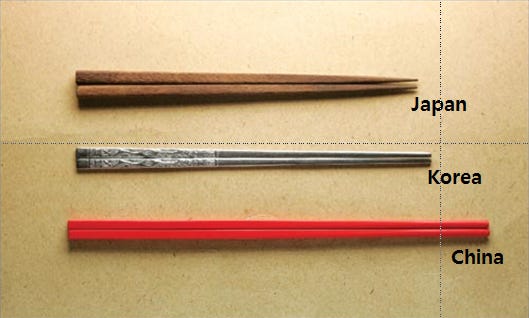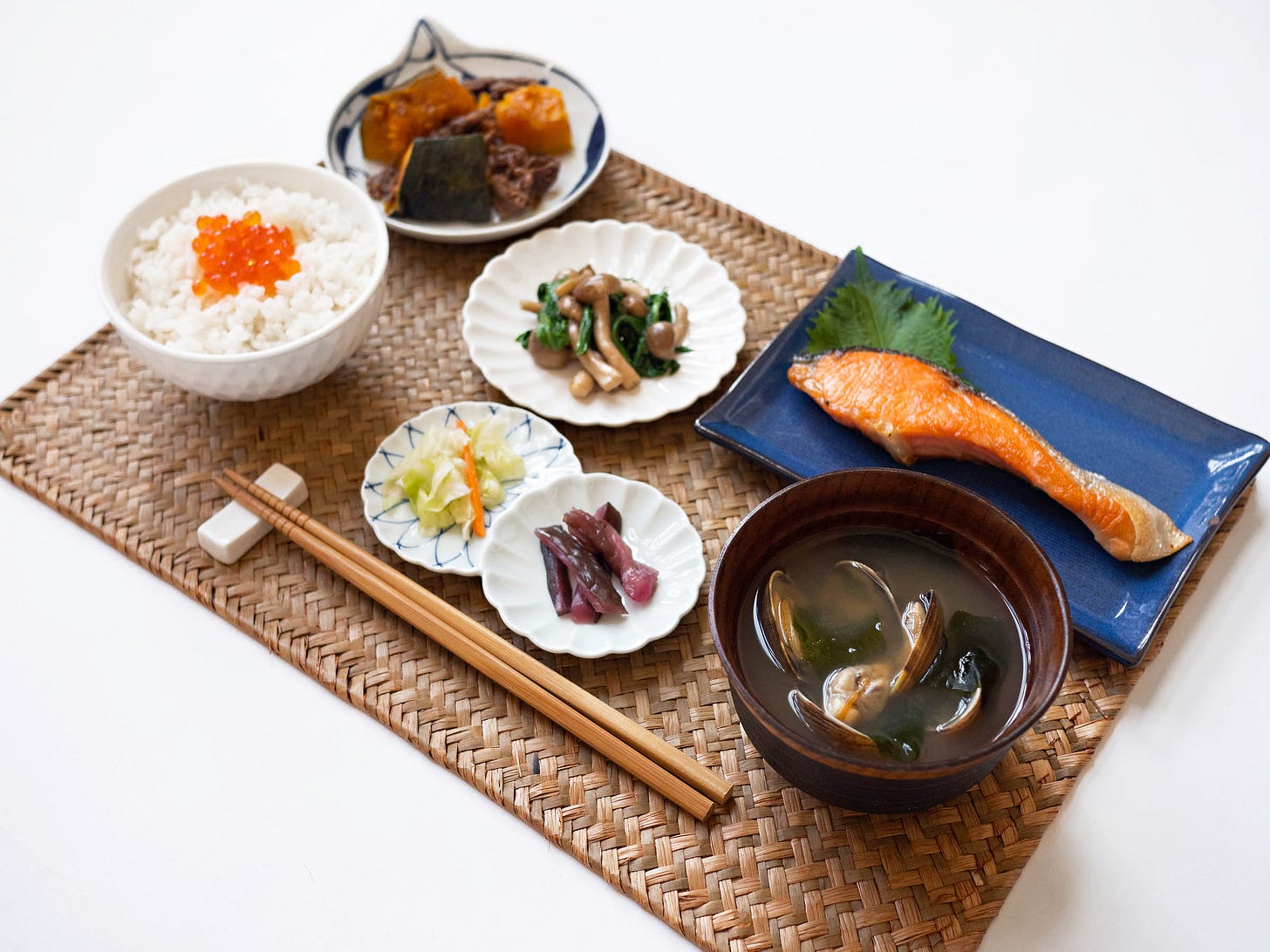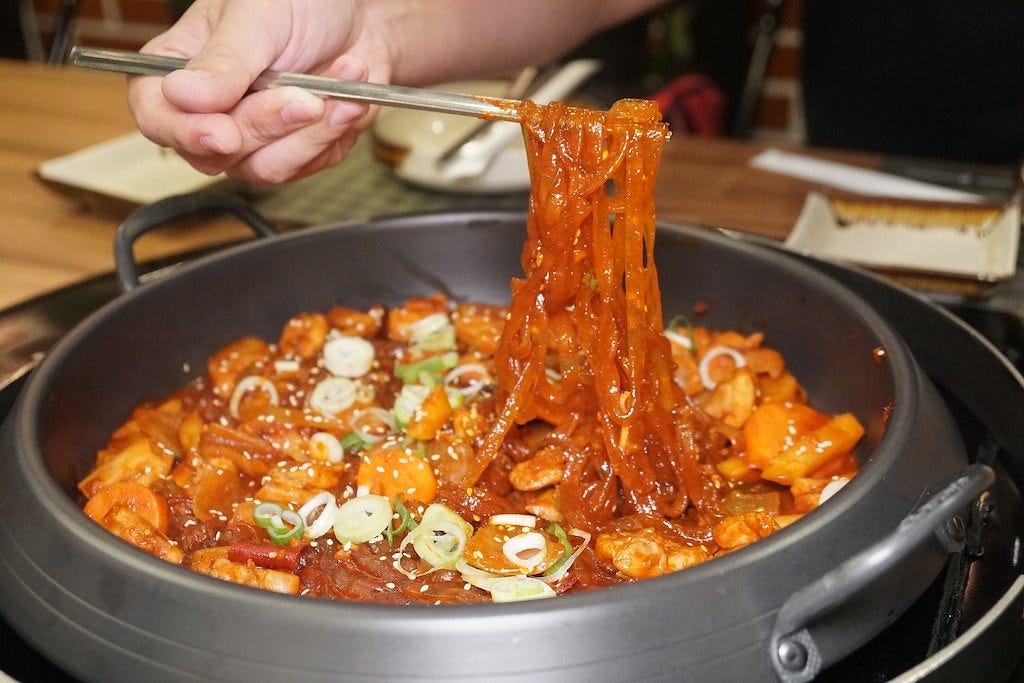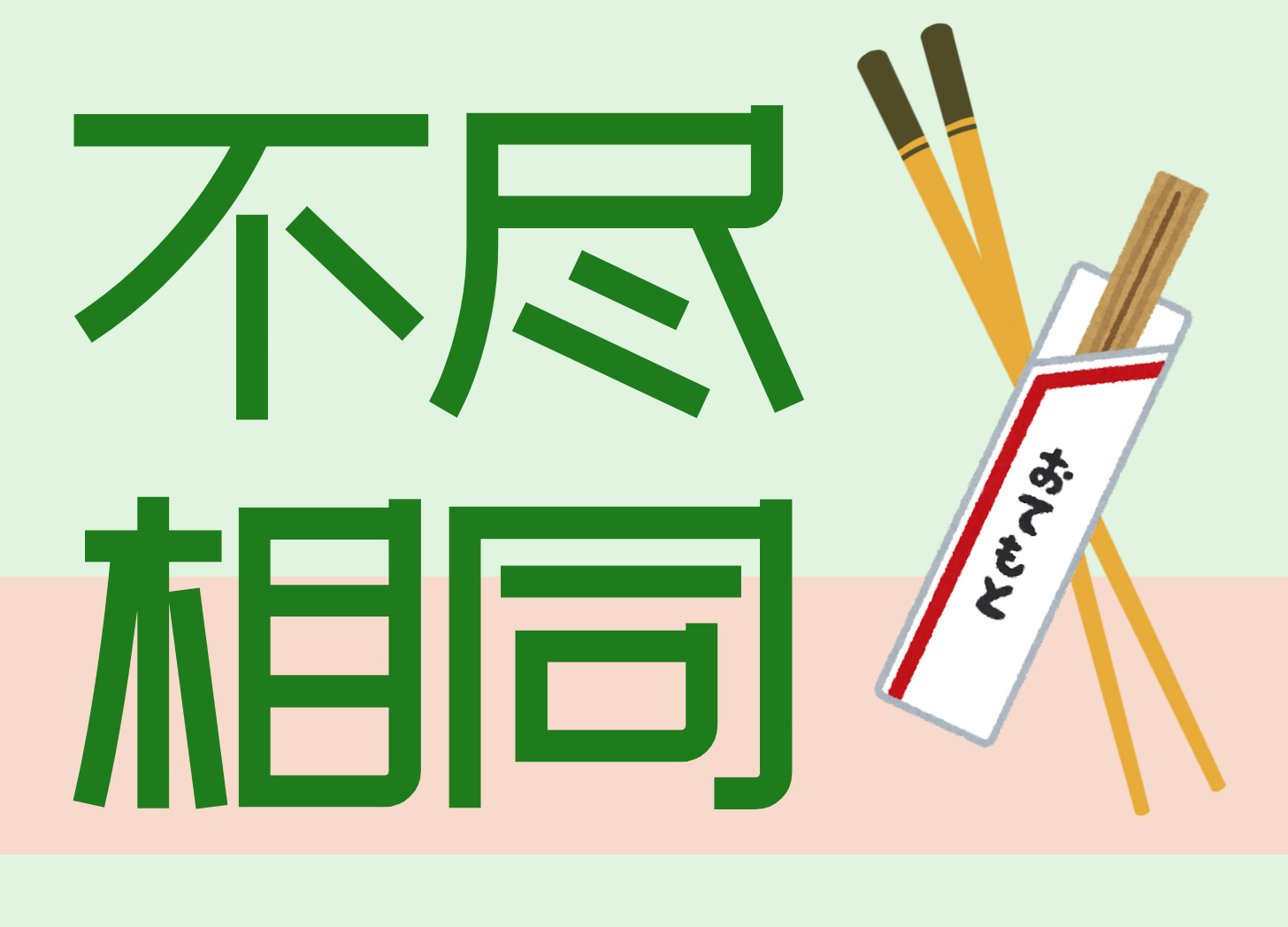Why Do Chopsticks Differ So Much Between China, Korea, and Japan?
Use the Pointy End to Remove the Fish Bones! 🥢
Idiom of the week: 不尽相同 (bù jìn xiāngtóng)
Meaning: not exactly the same, a bit different
由于历史和本土化的影响,筷子在三国之中均不尽相同。Due to historical and localization influences, chopsticks are not exactly the same across the three countries.
Have you already visited all of these amazing East Asian countries? Despite sharing common cultural influences—chopsticks being one example—Japanese, Korean, and Chinese food are very different. The meals vary, and so do the chopsticks! The symbols of East Asian cuisine differ in length and shape in each of these countries.
Do you wonder why?

筷子是东亚文化圈普遍使用的餐具,其造型设计十分适合东亚的饮食习惯。受古代汉文化的影响,日本和朝鲜半岛的居民也用筷子进食。使用筷子进食是一种文化,尽管今天中日韩三国都有使用筷子进食的文化,但由于历史和本土化的影响,筷子在三国之中均不尽相同。
东亚文化圈 (dōng yà wénhuà quān) – East Asian cultural sphere
造型设计 (zàoxíng shèjì) – design
饮食习惯 (yǐnshí xíguàn) – eating habits
进食 (jìnshí) – to eat
本土化 (běntǔhuà) – localization
不尽相同 (bù jìn xiāngtóng) – not exactly the same, different
Chopsticks are commonly used utensils in the East Asian cultural sphere, and their design is highly suited to the local eating habits. Influenced by ancient Han culture, the residents of Japan and the Korean Peninsula also use chopsticks for dining. Eating with chopsticks is a cultural practice, and although China, Japan, and South Korea all share this tradition today, due to historical and localized influences, chopsticks differ across these three countries.
号称深谙“筷子文化”的国人每每在提起“筷子”的话题时,就会自豪地忽悠世界:早在距今3000年前,吾上邦中华就已经出现了由象牙精工而制的象牙筷云云。
中国是筷子的鼻祖,相传大禹是世界上使用筷子的第一人。作为一个文明、一个时代的象征,大禹更像是一个时代的符号,正确的说法应该是“大禹时代的人是最早使用筷子的”。
号称 (hàochēng) – to claim, to boast
深谙 (shēn'ān) – to be deeply knowledgeable or familiar with
每每 (měiměi) – every time
提起 (tíqǐ) – to mention, to bring up
忽悠 (hūyōu) – to deceive, to boast or exaggerate (informal)
自豪 (zìháo) – to feel proud
吾上邦 (wú shàng bāng) – ‘my country’, referring to one's own country in a formal or classical style. In this context, it refers to China, often used in historical or literary contexts.
象牙 (xiàngyá) – ivory
精工 (jīnggōng) – exquisite craftsmanship
筷云云 (kuài yún yún) – a colloquial or literary expression meaning "chopsticks and so on" or "chopsticks and similar items."
鼻祖 (bízǔ) – the originator, the founder
相传 (xiāngchuán) – it is said, according to legend
大禹 (Dà Yǔ) – Yu the Great (a legendary Chinese hero)
象征 (xiàngzhēng) – symbol
符号 (fúhào) – symbol, sign
When discussing the topic of these utensils, Chinese people, who are said to deeply understand "chopstick culture," often say that exquisitely crafted ivory chopsticks had already appeared in ancient China as early as 3,000 years ago.
China is considered the birthplace of chopsticks, and it is said that Yu the Great was the first person in the world to use them. As a symbol of a civilization and an era, Yu the Great is more of a symbol of that time. A more accurate statement would be: "It was the people of Yu the Great's era who were the first to use chopsticks."

日本也是用筷大国。研究日本人的筷子文化,让我们颇觉欣慰的是,在今天的中国年轻人已不知“箸”为何物时,是日本人替我们守护了这份筷子文化的传统。
不过筷子到了日本后,在使用上已渐渐地有别于中国了。首先,在造型上已短于中国筷子,并且以圆尖头的居多。
比中国筷子短,据说是源出日本人大都是吃“定食”即份儿饭,用不着长筷之故。而筷子演变为尖头,则是由于日本人善食鱼,用尖筷易于剔鱼刺之故耳。
大国 (dàguó) – major country, great power
颇觉 (pō jué) – to feel quite, to feel rather, to have a strong sense of
欣慰 (xīnwèi) – comforted, relieved
箸 (zhù) – chopsticks (an ancient or formal term for chopsticks, more commonly used in Japan and sometimes in classical Chinese literature)
守护 (shǒuhù) – to guard, to protect
渐渐地 (jiànjiàn de) – gradually
有别于 (yǒu bié yú) – to differ from
圆尖头 (yuán jiān tóu) – round pointed tip
定食 (dìngshí) – set meal
份儿饭 (fènr fàn) – portioned meal, individual serving
演变 (yǎnbiàn) – to evolve, to develop
尖头 (jiāntóu) – pointed tip
善食 (shàn shí) – good at eating
剔鱼刺 (tī yú cì) – to remove fish bones
故耳 (gù ěr) – an expression used to indicate "this is the reason" or "this is why."
Japan is also a major chopstick-using nation. In studying Japanese chopstick culture, it is somewhat comforting to realize that, at a time when many young people in China no longer know the word "箸" (an ancient term for chopsticks), it is the Japanese who have helped preserve this traditional aspect of chopstick culture for us.
However, after chopsticks were introduced to Japan, they gradually began to differ from those in China. First, in terms of design, Japanese chopsticks became shorter and are mostly characterized by rounded, pointed tips.
The shorter length of Japanese chopsticks is said to stem from the fact that Japanese people typically eat "set meals" (teishoku), which do not require long chopsticks. As for the evolution of pointed tips, it is attributed to the Japanese preference for eating fish, as pointed chopsticks make it easier to pick out fish bones.

我们的另一位或可说是两位邻居南北韩,也是用筷大国。只不过是筷子到了半岛,半岛人抛竹弃木,把它全弄成金属制的了。
在半岛上,过去是大王、大臣和富人用金银制筷子,而普通百姓只能用铁制的筷子。而今天则改为了以漂亮的不锈钢制筷子为主流。
半岛 (bàndǎo) – peninsula
抛竹弃木 (pāo zhú qì mù) – to discard bamboo and wood (literally "throw away bamboo and abandon wood")
金属制 (jīnshǔ zhì) – made of metal
大王 (dàwáng) – king
大臣 (dàchén) – minister
富人 (fùrén) – rich people
金银制 (jīn yín zhì) – made of gold and silver
普通百姓 (pǔtōng bǎixìng) – ordinary common people
铁制 (tiě zhì) – made of iron
不锈钢制 (bùxiùgāng zhì) – made of stainless steel
主流 (zhǔliú) – mainstream
Our other neighbors, or perhaps two neighbors—North and South Korea—are also major users of chopsticks. However, after chopsticks arrived on the Korean Peninsula, the locals abandoned bamboo and wood, opting instead for metal.
In the Korean Peninsula, kings, ministers, and the wealthy once used chopsticks made of gold or silver, while ordinary people could only afford iron chopsticks. Today, however, beautifully crafted stainless steel chopsticks have entered the mainstream.
不用木筷和竹筷,据说是因为半岛料理以“红色”见长,长期使用木筷或竹筷,会使筷子头部染上红红的颜色而遭废弃之故。
也有的说是因为半岛人爱吃烤肉,才发明了最适合吃烤物的金属筷子。不管怎么说,半岛上人用的餐具刚一接触,还是给人一种冷冰冰的感觉,虽然吃起来是辣辣的、热火朝天的。
木筷 (mù kuàizi) – wooden chopsticks
竹筷 (zhú kuàizi) – bamboo chopsticks
染上 (rǎn shàng) – to be stained with, to dye
废弃 (fèiqì) – to discard, to abandon
冷冰冰 (lěng bīng bīng) – cold, chilly
热火朝天 (rè huǒ cháo tiān) – sizzling hot, intense
The avoidance of wooden or bamboo chopsticks is said to be due to the prominence of "red color" in Korean cuisine. Prolonged use of wooden or bamboo chopsticks would cause their tips to become stained red, leading to their eventual disposal.
Some say that metal chopsticks were invented because the people of the Korean Peninsula love grilled meat, and metal chopsticks are the most suitable for handling grilled foods. Regardless of the reason, the utensils used there give an initial impression of being cold to the touch, even though the food itself is spicy and sizzling hot.
Which chopsticks do you prefer?
Antoine & Dorota
Referenced author: bannedbook







